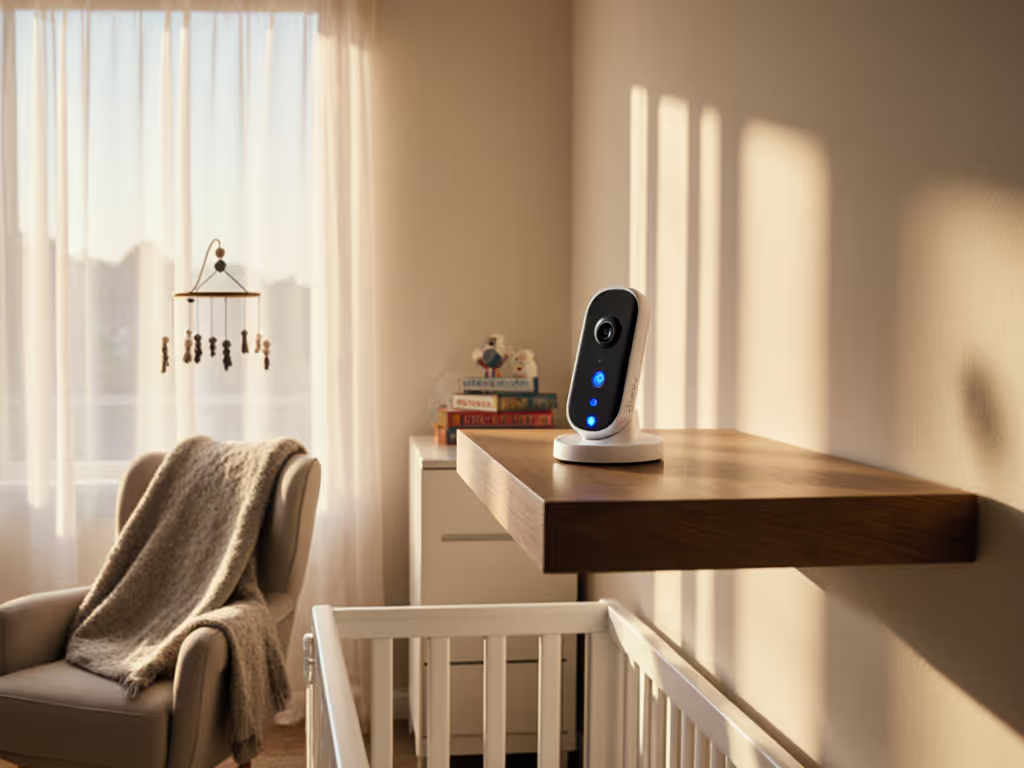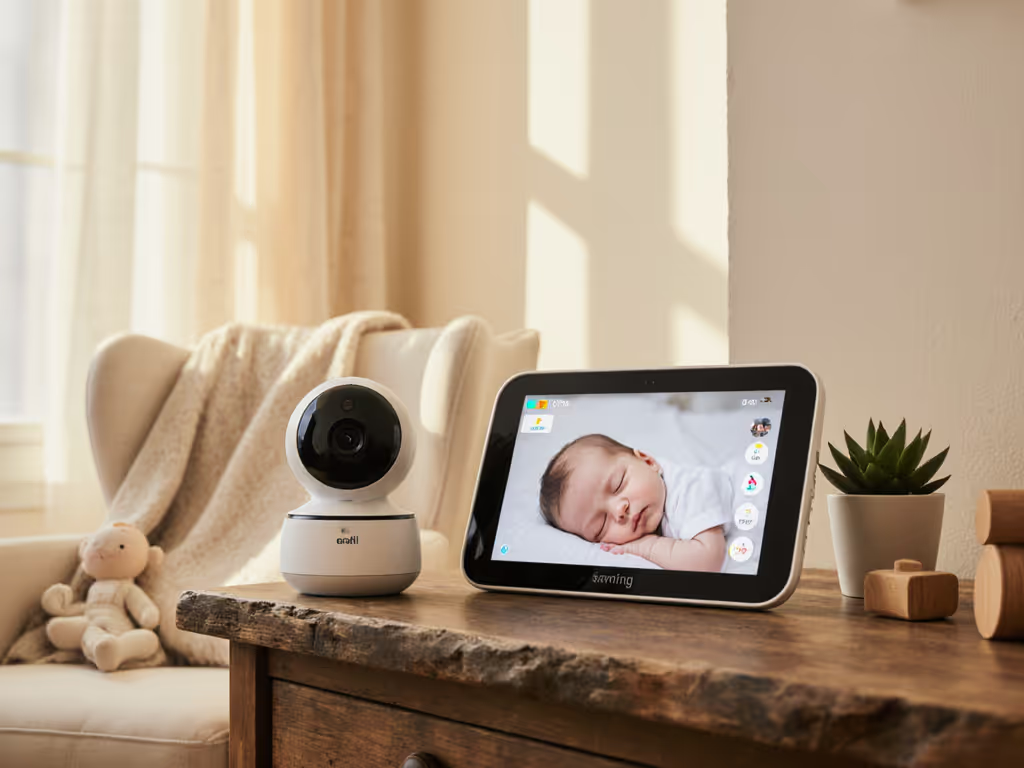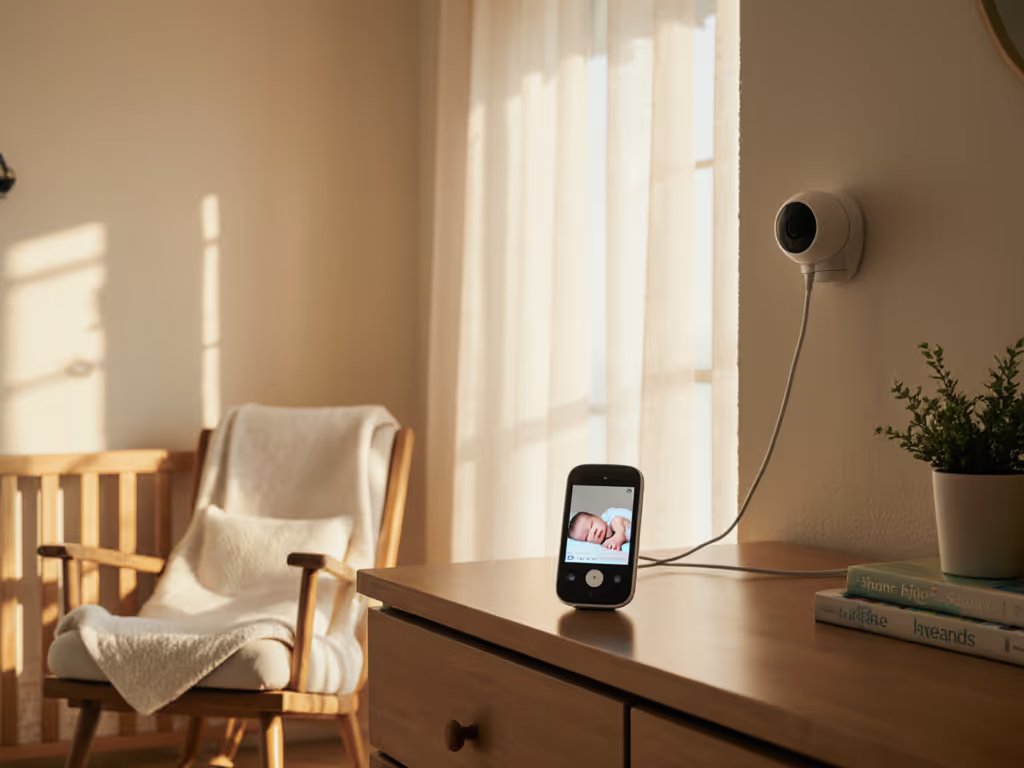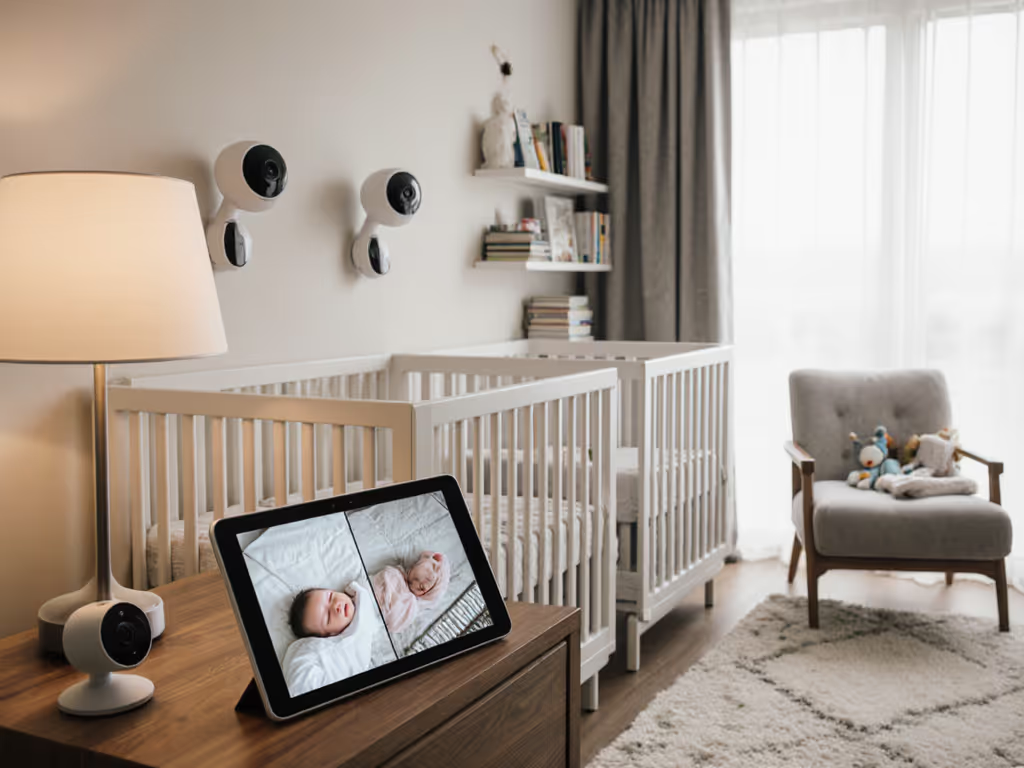
How to Choose Baby Monitor for Privacy and Safety

Over 60 percent of parents report confusion when choosing a baby monitor, often missing key details that affect safety and peace of mind. Picking the right model goes far beyond price tags or popular brands. Each home and family needs something a little different for true confidence. This guide gives you clear, practical steps to help you find a baby monitor that fits your space, protects your privacy, and makes daily life a little easier.
Quick Summary
| Key Point | Explanation |
|---|---|
| 1. Assess your home layout first | Understanding your home’s layout is crucial for choosing an appropriate baby monitor model. Consider size, walls, and potential dead zones. |
| 2. Prioritize privacy and security features | Evaluate encryption methods and data handling practices to ensure protection against unauthorized access and privacy breaches. |
| 3. Compare connection types thoughtfully | Different connection types affect functionality; choose between digital WiFi systems, analog monitors, or hybrids based on your specific needs. |
| 4. Ensure ease of use and setup | Select monitors that are simple to install and operate, allowing for intuitive adjustments during parenting tasks. |
| 5. Test performance under real conditions | Conduct thorough tests of signal strength, video quality, and feature reliability in your home to ensure effective monitoring. |
Step 1: Assess your home and monitoring needs
Choosing the right baby monitor starts with understanding the unique layout and specific requirements of your home environment. This step is about mapping out your monitoring needs by carefully evaluating your living space and family dynamics.
Begin by walking through your home and identifying the key areas where you want monitoring coverage. Consider the size of your home, the number of floors, wall materials, and potential signal interference zones. Are you in a small apartment or a multilevel house? Do you have thick concrete walls or wooden partitions? These factors significantly impact the type of monitor you will need. Pay special attention to your baby's sleeping area and any adjacent rooms where you spend most of your time.
Your home's physical characteristics directly influence monitor performance. Wireless signals behave differently in various environments. Wooden frame houses might have better signal transmission compared to homes with metal infrastructure or dense concrete walls. Make a quick sketch of your home layout and mark potential dead zones or areas with weak connectivity. This visual mapping helps you understand which monitor technologies will work best.
Pro Tip: Measure the actual distance between your baby's room and the areas where you typically spend time. Most baby monitors have specific range limitations that can surprise parents who assume unlimited coverage.
Once you complete this assessment, you will have a clear blueprint for selecting a monitor that matches your home's unique characteristics. The next step involves translating these insights into specific technical requirements for your ideal baby monitor.
Step 2: Review privacy and security features
Privacy and security are not just buzzwords when it comes to baby monitors they are essential safeguards for your family's digital safety. In this step, you will learn how to thoroughly evaluate the privacy and security features of potential baby monitor systems to protect your home and loved ones.
Start by examining the data transmission methods of potential monitors. Not all monitors are created equal when it comes to security. Wifi connected monitors offer convenience but can be more vulnerable to digital intrusions. Look for monitors that use encrypted digital signals specifically those with 256 bit AES encryption which provides military grade security protection.
 Pay close attention to whether the monitor uses local network transmission or cloud based storage for video and audio recordings. Local transmission typically offers stronger privacy protections since data does not leave your home network.
Pay close attention to whether the monitor uses local network transmission or cloud based storage for video and audio recordings. Local transmission typically offers stronger privacy protections since data does not leave your home network.
Check the manufacturer's privacy policy and data handling practices with microscopic detail. Some monitors collect and potentially share user data more aggressively than others. Investigate whether the monitor requires mandatory account creation whether data is anonymized and what third party access might exist. Look for monitors that offer granular privacy controls allowing you to customize how your data is stored transmitted and potentially deleted.
Pro Tip: Always change default passwords immediately and use two factor authentication if available. Never use simple or predictable passwords that could be easily guessed.
By methodically reviewing these privacy and security features you will significantly reduce the risk of unauthorized access to your baby monitor system. The next step involves comparing specific models to find the most secure option for your home environment.
Step 3: Compare connection types and core functions
Understanding the different connection types and core functions of baby monitors is crucial for selecting a system that meets your specific monitoring needs. This step will guide you through the key technical considerations that can make or break your monitoring experience.
Connection types fundamentally determine how your baby monitor will operate and communicate. You have three primary options digital WiFi connected systems analog radio frequency monitors and hybrid models. WiFi connected monitors provide advanced features like smartphone app integration and remote viewing but require stable internet connectivity. Radio frequency monitors offer more direct local transmission with potentially stronger signal reliability especially in homes with multiple walls or complex layouts. Hybrid models combine the best of both worlds providing local transmission backup and internet connected features.
Core functions extend beyond simple audio or video transmission. Modern baby monitors come packed with sophisticated features like temperature monitoring breathing tracking movement detection and two way audio communication. Some advanced monitors offer breathing monitoring through sophisticated sensor technologies that can track your baby's respiratory patterns. Others include room temperature sensors to ensure optimal sleeping conditions. Consider which specific functions matter most to your family dynamic. Do you need night vision capabilities? Are multiple camera views important? Would you benefit from mobile app integration that allows sharing access with other caregivers?

Pro Tip: Always test the monitor's range and signal strength in your actual home environment. Manufacturers specifications can differ significantly from real world performance.
By methodically comparing connection types and evaluating core functions you will narrow down your options to the most suitable baby monitor for your specific needs.
The next step involves understanding the practical implications of these technical specifications.
Step 4: Evaluate ease of use and installation
Choosing a baby monitor is not just about technical specifications but also about how seamlessly it integrates into your daily parenting routine. This step will help you assess the practical aspects of setup and usability that can make or break your monitoring experience.
Start by examining the initial setup process. Look for monitors with straightforward installation that do not require advanced technical skills. Consider the number of components involved. Are there multiple pieces to assemble? Do you need special tools or professional assistance? Some modern monitors offer plug and play functionality with minimal configuration required. Check whether the system provides clear written instructions or video tutorials that walk you through the entire setup process. Wireless monitors often require additional steps like network configuration while local transmission models tend to have more direct installation procedures.
Evaluate the ongoing user experience beyond initial setup. Consider the interface design of the parent unit or mobile app. Are the controls intuitive? Can you adjust settings quickly while managing other parenting tasks? Look for monitors with responsive touchscreens simple button layouts and clear audio visual indicators. Some advanced monitors offer voice activation or one touch features that can be incredibly helpful when your hands are full. Pay attention to battery life and charging mechanisms. A monitor with short battery duration or complicated charging requirements can become more frustrating than helpful.
Pro Tip: Before making a final purchase test the monitor interface in store or request a demonstration. What seems simple in marketing materials might feel complicated in real world parenting scenarios.
By carefully assessing installation complexity and ongoing usability you will find a baby monitor that feels like a helpful tool rather than an additional challenge. The next step involves comparing potential models side by side to make your final selection.
Step 5: Test monitor performance before finalizing
Before making your final baby monitor selection, you need a comprehensive performance assessment that goes beyond marketing claims and specifications. This step will help you conduct a thorough real world evaluation to ensure the monitor truly meets your family's monitoring needs.
Create a systematic testing protocol that mimics your actual home environment. Place the monitor in multiple locations within your living space to assess signal strength range and video transmission quality. Test the monitor during different times of day and through various walls and obstacles. Pay close attention to video clarity audio responsiveness and potential signal interference. Check the monitor's performance in low light conditions and verify the accuracy of additional features like temperature monitoring or movement detection. Record the monitor's behavior during different scenarios like when you move between rooms or during potential network disruptions.
Evaluate the monitor's long term functionality beyond initial impressions. Check battery performance under continuous use examine how quickly the device drains and recharges and test the reliability of wireless connections. Some monitors experience signal degradation over time so a week long trial can reveal issues that might not be immediately apparent. Consider how the monitor performs during different household activities like running kitchen appliances or using other wireless devices that might create electromagnetic interference.
Pro Tip: If possible borrow the monitor from a store with a generous return policy or purchase from a retailer that allows comprehensive testing before final commitment.
By meticulously testing the monitor's performance across various scenarios you will gain confidence in your selection and ensure a reliable monitoring solution for your family. The final step involves making an informed decision based on your comprehensive assessment.
Secure Your Baby's Safety with Expert Privacy Guidance
Choosing a baby monitor that truly protects your family's privacy and safety can feel overwhelming. This article highlights the critical concerns parents face such as encrypted data transmission, secure local network options, and battling risks from remote hacking. We understand the pain points you deal with like finding a reliable monitor that balances advanced features with strong privacy safeguards while remaining easy to use in your home environment.
At Babymonitorsforparents.pro, we specialize in guiding parents through exactly these challenges. Discover unbiased reviews and detailed comparisons focused on privacy features like 256 bit encryption and local data storage. Learn how to decode technical specs and test real world monitor performance so you can confidently choose a monitor that keeps your baby safe without exposing your family’s personal data. Start securing peace of mind today by exploring our in-depth buying guides and expert advice on setup and security. Don't wait until vulnerabilities arise. Take the next step to protect your loved ones with knowledge you can trust.
Frequently Asked Questions
How can I assess the privacy features of a baby monitor?
To assess a baby monitor's privacy features, look for specifications that mention encrypted digital signals, such as 256-bit AES encryption, and local data transmission. Review the manufacturer's privacy policy and ensure you understand how your data will be stored and shared.
What are the best connection types for baby monitors regarding safety?
Digital WiFi-connected monitors offer advanced features but can be vulnerable to hacking, while analog radio frequency monitors provide more straightforward local transmission. Compare these options to choose a system that balances connectivity and security according to your needs.
How do I evaluate the security of a baby monitor?
Evaluate the security of a baby monitor by checking for encryption methods, data handling practices, and the need for mandatory account creation. Prioritize monitors that offer customizable privacy controls and ensure you change default passwords to enhance security.
What features should I prioritize for monitoring my baby’s safety?
Start by prioritizing features like video quality, two-way audio communication, and environmental sensors for temperature or movement detection. Identify your specific needs, such as remote access capabilities and night vision, to enhance your monitoring experience.
How can I test a baby monitor's functionality before purchasing?
Test a baby monitor's functionality by simulating its use in your home environment, including checking signal strength and video clarity in different locations. Observe its performance during various daily routines to ensure it meets your monitoring requirements.
What installation factors should I consider when choosing a baby monitor?
Consider the complexity of installation and ease of use when selecting a baby monitor. Look for models that offer plug-and-play functionality and intuitive interfaces, so you can integrate the monitor seamlessly into your parenting routine.




